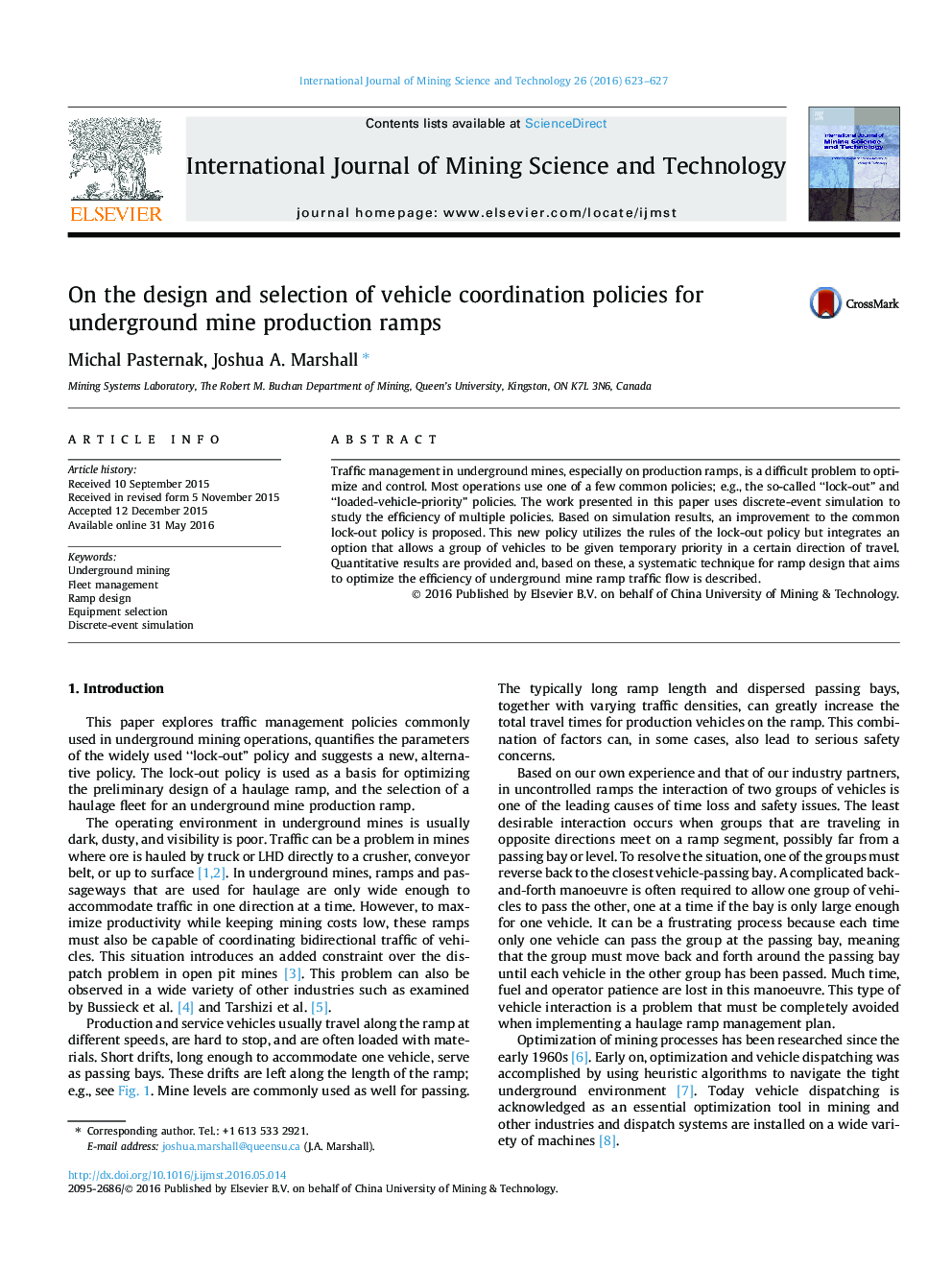| Article ID | Journal | Published Year | Pages | File Type |
|---|---|---|---|---|
| 275368 | International Journal of Mining Science and Technology | 2016 | 5 Pages |
Traffic management in underground mines, especially on production ramps, is a difficult problem to optimize and control. Most operations use one of a few common policies; e.g., the so-called “lock-out” and “loaded-vehicle-priority” policies. The work presented in this paper uses discrete-event simulation to study the efficiency of multiple policies. Based on simulation results, an improvement to the common lock-out policy is proposed. This new policy utilizes the rules of the lock-out policy but integrates an option that allows a group of vehicles to be given temporary priority in a certain direction of travel. Quantitative results are provided and, based on these, a systematic technique for ramp design that aims to optimize the efficiency of underground mine ramp traffic flow is described.
